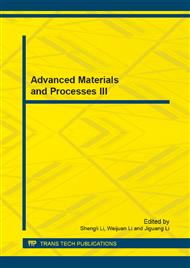p.1114
p.1118
p.1122
p.1127
p.1135
p.1142
p.1146
p.1150
p.1154
Application of Inverse Heat Conduction Problems in the Slab Solidification Process
Abstract:
The surface heat transfer coefficient is obtained by the calculation of water-flowing in the second cooling zone of continuous casting; the parameters of this formula are determined by the engineering experiment methods. This paper adopts a new method-numerical calculation method to obtain these parameters. Firstly, the paper uses the method of solving inverse heat conduction problems to calculate the surface heat flux and the surface heat transfer coefficient. Secondly, by using the least square method, the parameters in the formula between the surface heat transfer coefficient and water-flowing are identified. Finally, a plant steel data is used to do some simulation experiments. The results of this simulation prove this numerical method feasibility and effectiveness.
Info:
Periodical:
Pages:
1135-1141
Citation:
Online since:
September 2013
Authors:
Price:
Сopyright:
© 2013 Trans Tech Publications Ltd. All Rights Reserved
Share:
Citation:


